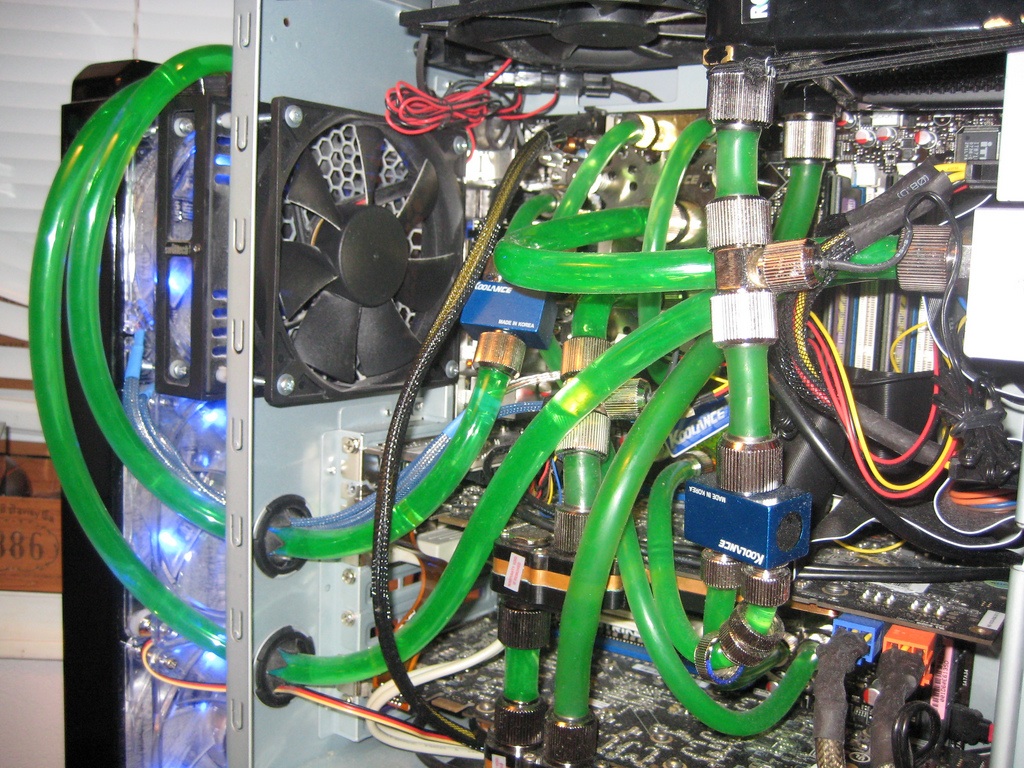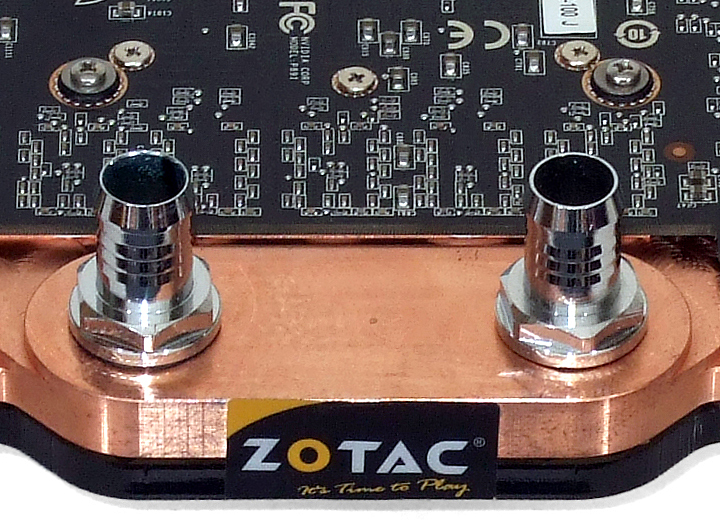GeForce GTX 285 On Water Cooling: Zotac's Infinity Edition
Why Water?
Liquid cooling takes advantage of the key features that a larger radiator offers compared to local sinks, with the added benefit that the radiator can often be mounted in a cooler air stream.
That explains why a large radiator sits at the front of most automobiles, but in the case of overclocking, complexity and inconvenience have limited the number of liquid-cooling applications in PCs. Most liquid cooling systems focus on the CPU, since adding other components to the loop makes servicing a nightmare. In particular, removing a liquid cooling system from graphics cards requires extreme caution and plenty of extra time to drain the system, which must then be refilled and re-purged (to remove air from the water lines) before it can be used again. This could easily turn five minutes of diagnostic work into a one-hour ordeal--and that's if you know what you're doing.
But liquid cooling’s inconveniences can be more easily justified in situations where air cooling simply isn’t adequate. We’ve run into this exact problem when overclocking multi-card graphics configurations, and our December $2,500 3-Way SLI PC was the most noteworthy example. Packing three double-slot cards together limited airflow to the intake fans of the top two cards, so that cooling was barely adequate to keep up with the configuration’s stock speed. Don't even think about overclocking in that situation.
For overclockers, the opportunity to seek significant performance gains makes liquid cooling’s troubles worthwhile, and several companies are ready to fulfill those needs. Options include buying an air-cooled card and adding an expensive liquid-cooling “water block” or purchasing a card with the water block pre-attached, such as the GeForce GTX 285 Infinity Edition from Zotac.
Liquid-cooled graphics cards typically cost around $50 less than the sum of their parts (high-end water block plus a high-spec card), so the smart money for anyone looking to water cool is to buy these parts pre-assembled. Zotac adds one more reason to purchase its product by pre-overclocking its GPU and RAM to extra-high speeds, selling the card with a warranty that home overclockers typically must sacrifice. That also means that each GTX 285 Infinity Edition is hand-selected for its ability to support the rated speeds, while the purchaser of a reference-clocked card must rely on the luck of the draw to reach similar or greater speeds.
Overclockers aren’t the only market for liquid-cooled electronics, as similar methods have been used to address airflow constraints in densely packed servers. And let’s not forget home-theater and audio-studio applications where liquid cooling allows enormous passive radiators to suffice in situations that would have otherwise called for noisy high-speed fans. All of these markets share a common goal of increased cooling capacity at reduced use of local space and these are things that even non-overclocking performance enthusiasts can appreciate.
Get Tom's Hardware's best news and in-depth reviews, straight to your inbox.
-
acasel It would be better if we could see how well the zotac overclocked card overclocked.. In other words pushed to the limits.Reply -
54 deg C above ambient for W/C 285GTX makes no sense.Reply
The temperature of my 8800GTS 512 running GPU at 800Mhz (from 650MHz) + W/C southbridge and 2 X 120 Radiator. My rig maxes out at 27 Deg C above ambient. -
Crashman gothminst3r54 deg C above ambient for W/C 285GTX makes no sense. The temperature of my 8800GTS 512 running GPU at 800Mhz (from 650MHz) + W/C southbridge and 2 X 120 Radiator. My rig maxes out at 27 Deg C above ambient.Reply
Perhaps the chosen liquid cooling system doesn't have enough pressure. -
MikePHD Wow! Was this supposed to fool us into thinking they knew anything about watercooling... this arcticle is a joke. Why does the water cooled card not get overclocked, while on the same token, the "air" card gets overclocked the hell out of.Reply
This is obviously not the limit of water cooling, it's either the product of a very lame product, or the testers ignorance of water setups. -
neiroatopelcc I wonder why you bothered doing this article? As we can all agree this card only makes sense if you plan on putting it in a very tight place, or have 2-3 of them in a chassis. So why didn't you request 3 cards and compare it to a standard 3 card setup? The interesting thing would be to see if it actually helps enough to make a 3sli setup doable longterm. As it is, all the article shows is that the watercooling used is inadequate for the task it was given.Reply -
rubix_1011 It's really sad that you chose to use the Big Water kit to push the cooling on the GPU instead of incorporating the CPU loop with the GPU using the far superior 655 pump and just adding an additional radiator instead. Your temps of 56+ C are way to high for a watercooled component...you shouldn't see more than 40C at load, especially with that waterblock. You are crippling the temps and the basis of your entire article by using sub-par components in your tests. Anyone who watercools knows that today's GPUs need at minimum a 220 or similar surface area radiator to expend the heat being produced...same goes for your i7 CPU...but it looks like you have at least a 320 on it. You should have run a series loop and just added an additional 120 or 220 radiator/fans and been done with it. You'd have had much happier temp results.Reply -
grevaeg Would make alot more sense to put in a decent watercooling setup... this test doesnt give anyone ANY idea how a watercooling kit can perform...Reply
Currently running two q9550 and a 4870+ a 4870x2 on my loop.. never gets anything near ur single rad setup on a single card and cpu. Have never seen the temp going past 30c at home. -
Kaldor Good card and cooler. Bad article.Reply
You guys need to invest in a decent radiator and pump if you want to test liquid cooled components. A D5 and a MCR 220 isnt that expensive.
At least Zotac used a good cooler. Much better than the garbage EVGA uses on their cards. Al+Cu=lose. -
marraco A bit off topic:Reply
The first picture shows a case fan stating to get dusty.
The fan flaps already are white-brown.
On my city, fans become very dusty really fast. They end occluding radiators, and air vents. I even cutted out all the metal grid on the case, to reduce dust retention. but still it is catched on the metal borders.
I wish there where something to do about it. maybe some liquid or painting, or some trick to repel dust, or make it less adhesive.
(my father have a German shepper dog, and the last time I opened his case, it was completely full of dog hair.... fun)
If somebody read this, and know a fixing (not involving dogs), please, post.



